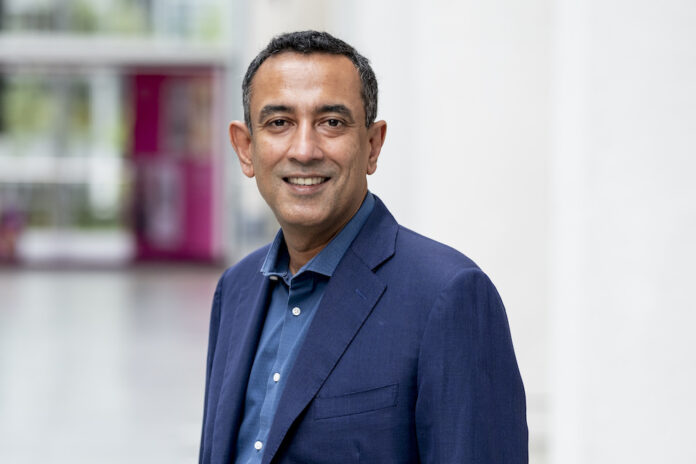A lesson for the UK
All bar an extremely unlucky 0.4 % of Germans can network at 100 Mbps at least over their LTE connection, according to the latest report from Europe’s flagship operator. Deutsche Telekom (DT) has achieved this incredible feat by creating 5,000 new LTE sites since the German spectrum frequency auction in 2019, giving it 99% reaches across all the federal states of Germany. In addition, the telco’s technical teams have also fleshed out the existing spine with more capacity by filling in the gaps, or ‘white spots’.
“Telekom has exceeded the Federal Network Agency ‘s expansion specifications that came with the last spectrum award,” Srini Gopalan, Deutsche Telekom board member for Germany (pictured), told RCR Wireless.
Since the auction DT has closed around 1,500 white spots in its network, filling in any gaps that might exist across the area covered by the infrastructure. A list of 500 white spots was agreed upon with the federal states and the German Federal Network Agency in November 2021 and since then 296 white spots have already been closed. In addition, basic coverage with broadband mobile communications already exists in many of the remaining areas. This was made possible, among other things, by the reallocation of the 900 MHz frequency band to LTE last year.
“In order for us to take the digital infrastructure further, everyone must now pull together. The support of municipalities, authorities and local people is crucial if we are to close the last gaps,” said Gopalan.
DT is looking for new locations throughout Germany to deploy LTE infrastructure to provide coverage in underserved areas and recently announced that its 5G network already reaches 95% of the country’s population. The telco said it expects the 5G technology to reach 99% of the Germany population by 2025. The carrier has over 80,000 antennas transmitting 5G, of which around 8,200 antennas are already providing the technology via the 3.6 GHz band.
In June last year, Deutsche Telekom announced that was pioneering use of spectrum in the 700 MHz range to provide 5G services in rural areas across Germany, where this range of signals travels better. In addition to the 700 MHz frequency, there are two other radio bands, 2.1 GHz and 3.6 GHz, which help to comprise the three separate signal types making up its 5Gradio network.
The telco said that 5G Standalone (SA) is technically available in the 2.1 GHz frequency band, adding that commercial use of 5G SA for residential customers will start as soon as applications are available. DT kicked off the rollout of its 5G network in a limited number of cities across Germany at the beginning of July 2019. In February DT announced a partnership with Nokia, Fujitsu and Mavenir for the initial phase of its commercial Open RAN (O-RAN) deployments across its European footprint.


